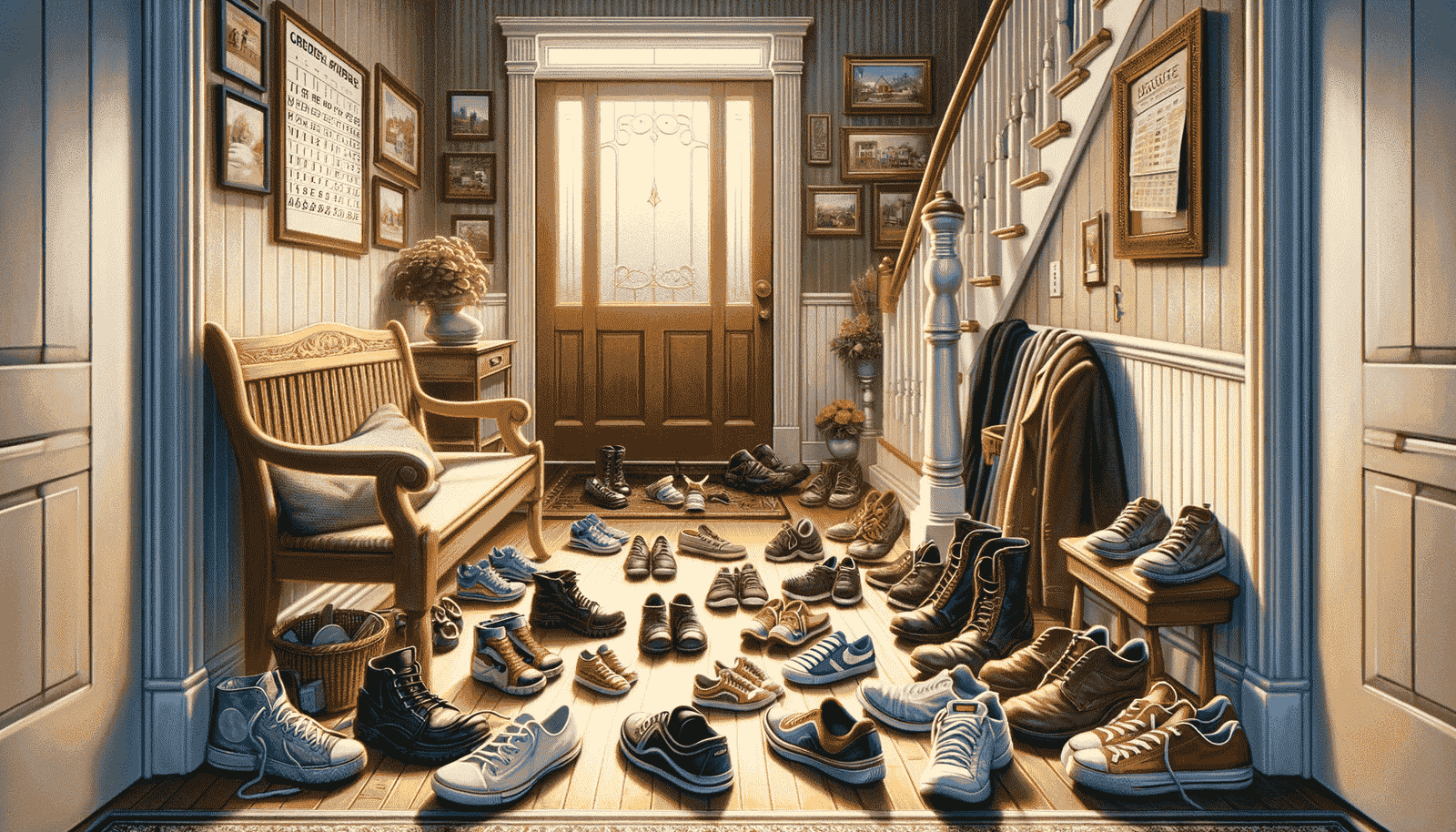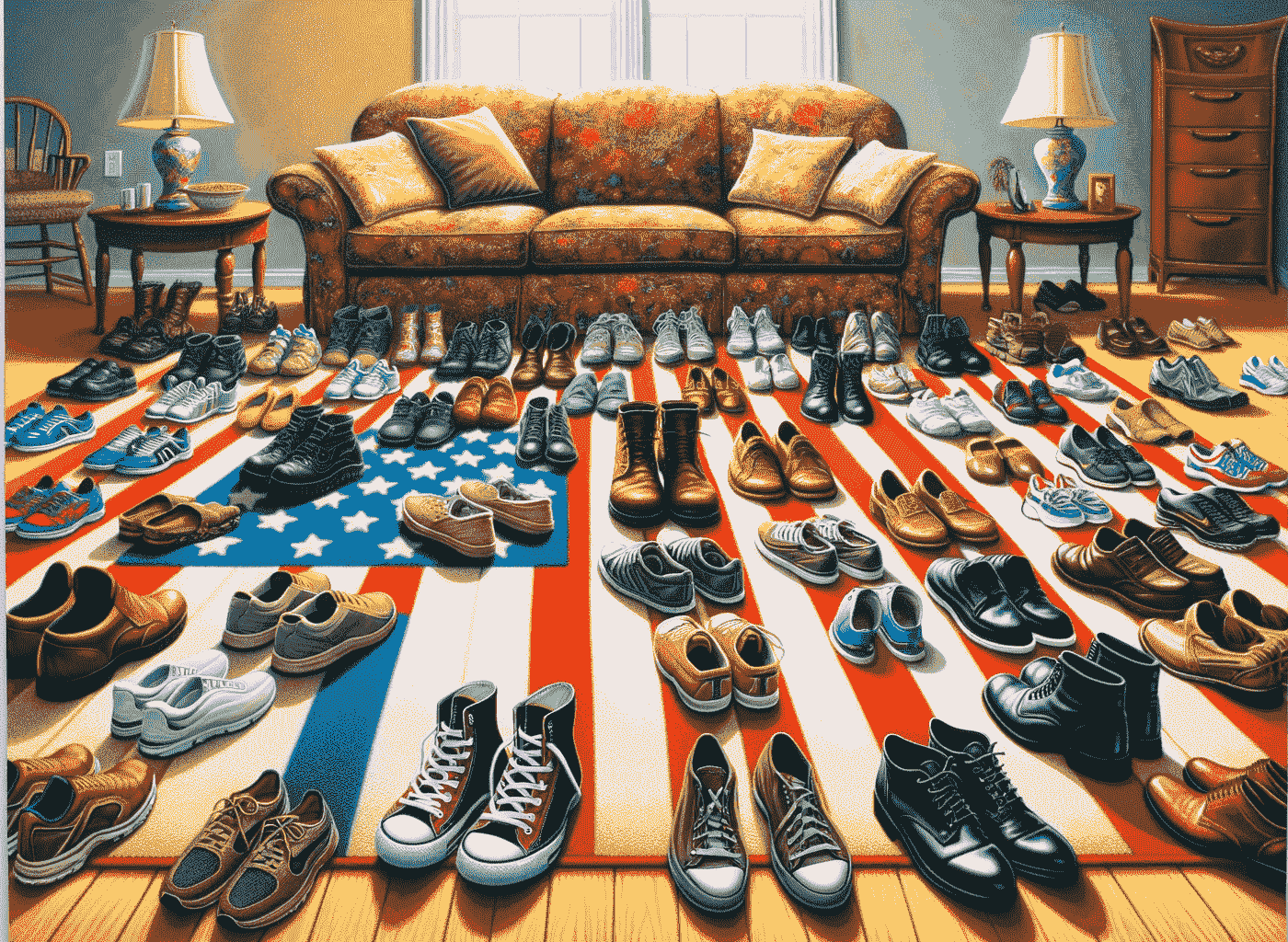Introduction
In this blog post, we delve into a cultural question that often intrigues visitors to the United States: why is it a common practice for Americans to wear shoes inside their homes? This habit, perceived as unusual or even a taboo in many parts of the world, reflects a unique American perspective. Through exploring the historical roots and reasons behind this practice, we’ll contrast it with the practices of other countries. Understanding this American habit sheds light on the diverse cultural nuances that make the U.S. distinct. Letes Explore Why do Americans wear shoes in the house?
Cultural and Historical Context
In understanding why Americans wear shoes in the house, it’s essential to consider the cultural and historical context of the United States. Known as a melting pot of cultures, the U.S. boasts a rich tapestry of diversity that is reflected in its customs and domestic habits. The practice traces back to the era of American colonization and westward expansion, where wearing shoes indoors was a practical response to the rough terrains and less refined living conditions of early American life. Over time, this necessity transformed into a norm across many households, illustrating how historical necessities can evolve into contemporary customs.
Why do Americans wear shoes in the house?
Convenience
The concept of convenience plays a significant role in the common practice of wearing shoes inside the house for many households in the United States. Although it’s not a one-size-fits-all rule for the entire population, the reasons behind why many Americans keep their shoes on indoors are deeply rooted in everyday practicality. For me, it’s about the quick transitions between the indoor and outdoor spaces. Imagine rushing out the door to work or to drop the kids at school; not having to remove and put on shoes each time truly saves time and effort. It’s these small nuances of daily life that reflect the broader cultural preferences in American homes.
Habit
The habit of wearing shoes inside the house has evolved into a long-standing cultural norm for many individuals and families. This practice, once adopted, becomes an ingrained part of daily life, reflecting the unique lifestyle choices that characterize different cultures and households.
Comfort and Support
Many people find that wearing shoes inside the house provides additional comfort and support, especially for those with specific foot conditions. They prefer the cushioning and stability that shoes offer, which can be essential for comfort and foot health throughout the day.
Cleanliness and Protection
Wearing shoes indoors is often seen as a way to protect the feet from potential hazards and dirt on the floor. Some believe that keeping shoes on is actually cleaner, avoiding contact with whatever might be on the ground.

Climate and Lifestyle
In regions with varying weather conditions and a focus on outdoor activities, many individuals choose to keep their shoes on to stay ready for outdoor excursions. This allows them to quickly step outside without the need for changing footwear, reflecting how climate and lifestyle influence daily choices.
Cultural Practices and Individual Preferences
Cultural practices and individual preferences can vary greatly, even within a country. While many Americans follow the custom of removing shoes before entering the house to maintain cleanliness and promote a more relaxed atmosphere, others might not, showcasing the diversity of practices across the nation.
Personal Choice and Influences
Ultimately, whether to wear shoes indoors is a personal choice, influenced by various factors such as personal comfort, cultural norms, and individual habits. This decision reflects a blend of personal preferences and the cultural environment in which one lives.
Realted Post:What Does GS Mean in Shoes? A Deep Dive
Cultural Insights: Shoes Off at the Door
In many parts of the world, customs and traditions mandate the removal of shoes upon entering a house. This practice, rooted in cleanliness and hygiene, is especially prevalent in Asian Cultures such as Japan, China, Korea, and Southeast Asia, where outdoor shoes are seen as carriers of dirt, germs, and spiritual impurities.
Middle Eastern and Nordic Practices
Similarly, in Middle Eastern Cultures, removing shoes at home is intertwined with respect, hospitality, and Islamic traditions emphasizing purity in living spaces. In the colder climates of Scandinavian and Nordic Cultures – including Sweden, Norway, Finland, and Iceland – the practice is driven by practicality, aiming to keep indoors free from wet, snowy conditions, thus avoiding dirty and slippery floors.
Hawaiian and Indigenous Traditions
Hawaiian Culture views removing shoes at the door as a sign of reverence for both the space and the host, often referred to as leaving your slippers at the door. Indigenous Cultures, like Native American and First Nations, follow this tradition in ceremonial or sacred spaces, showing respect for the land, spirits, and upholding their cultural traditions. Across these diverse cultures, the act of removing shoes is a deeply ingrained practice respected in many households.
Realted Post:What does h mean in shoe size?
Which cultures wear shoes in the house?
Shoe-Wearing Practices in Western Cultures
In Western Cultures, such as the United States, Canada, the United Kingdom, and parts of Europe, the habit of wearing shoes indoors is prevalent. In these regions, whether one wears shoes inside the home is often a matter of personal preference. Households and individuals differ in their approach, with some viewing it as a norm while others opt for shoe-free environments.
Australian Norms and Urban Lifestyles
In Australian Culture, due to the climate and a lifestyle geared towards outdoor activities, wearing shoes inside is relatively common. Casual and practical footwear is a part of the daily life. In Urban Environments, particularly in densely populated areas like New York City, London, or Tokyo, wearing shoes indoors aligns with the fast-paced lifestyle, convenience, and cultural mixing typical of such cosmopolitan cities.
Diverse Preferences Across Regions
The choice to wear shoes inside can vary significantly even within a country or region, influenced by families’ preferences, rules, and cultural norms. Factors such as comfort, cleanliness, cultural background, and individual habits play a crucial role in shaping this practice across different homes.
Conclusion
Drawing from our expert experience, the answer to Why do Americans wear shoes in the house? varies, but it’s a common practice, unlike in many parts of Asia. The reasons are diverse and understanding them offers a unique perspective. When you visit someone’s home in the West, it’s advisable to observe and ask whether to keep shoes on or take them off, respecting the homeowner’s preference.
Frequently Asked Questions about Why do Americans wear shoes in the house?
Q: Is it common for Americans wear shoes in the house?
A: Yes, it’s a common practice in many American households to wear shoes indoors, though this can vary based on personal preferences and regional customs.
Q: What are some reasons Americans wear shoes inside the house?
A: Reasons include convenience, cleanliness, foot support, climate considerations, and personal habits. It can also be influenced by the quick transition between indoor and outdoor spaces.
Q: Do all Americans wear shoes inside?
A: No, not all Americans wear shoes inside their homes. It’s a matter of personal or family preference, and practices vary widely across different households.
Q: How does this practice differ from other countries?
A: In many other countries, especially in Asian and Middle Eastern cultures, it’s customary to remove shoes before entering a home for reasons of cleanliness and respect.

